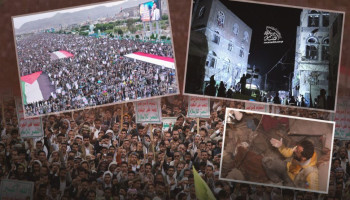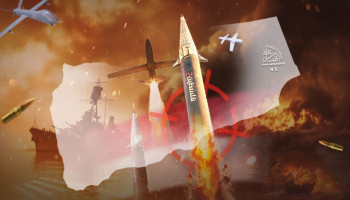Fifty-five years have passed since the heinous arson attack on Al-Aqsa Mosque. Yet, the threats and violations against this sacred site by the Israeli occupation continue to escalate at an alarming rate. These actions have now reached unprecedented levels of danger, posing a severe threat to the current status and future existence of the mosque. Today, Wednesday, August 21, marks the 55th anniversary of the burning of Al-Aqsa Mosque, a crime that has since been followed by increasing dangers surrounding the mosque. These actions seem to be part of a broader plan to change the status quo, ultimately aiming for the demolition of the mosque to pave the way for the construction of the so-called "Third Temple" on its ruins, with explicit support from the far-right Israeli government.
The infamous fire attack occurred on Thursday, August 21, 1969, when an Australian Jewish extremist named Denis Michael Rohan entered the mosque and deliberately set fire to its eastern wing. The flames quickly spread, engulfing the Qibli Prayer Hall, damaging its furniture, walls, roof, rare decorations, carpets, and all its contents, including copies of the Quran. The extensive damage required years of restoration and decoration to return the mosque to its former state.
The fire caused significant damage within the Qibli Prayer Hall, including the destruction of Salahuddin al Ayyubi's pulpit, parts of the intricately decorated inner Qubba, the colored marble mihrab, and the southern walls. Forty-eight windows made of gypsum and stained glass were shattered, and the carpets, along with many decorations and Quranic inscriptions, were burned. The fire affected more than a third of the mosque's total area, over 1,500 square meters out of 4,400 square meters. The intense flames caused extensive damage to the mosque's structure, columns, arches, and ancient decorations, leading to the collapse of the roof, two main columns, and the large stone arch supporting the Qubba.
As the flames ravaged the Qibli Prayer Hall, Israeli occupation forces cut off the water supply to the area surrounding the mosque and deliberately delayed the arrival of fire trucks from the Al-Quds municipality, preventing them from participating in extinguishing the blaze. Instead, fire trucks from the nearby Palestinian cities of Hebron and Ramallah arrived first and helped extinguish the fire.
The deliberate arson sparked widespread outrage and anger across the Muslim world, leading to protests in many countries. On the following day, thousands of Muslims performed Friday prayers in the outer courtyard of Al-Aqsa Mosque, and demonstrations erupted throughout Al-Quds in protest against the arson attack.
The Flames Still Burn
Despite the passage of 55 years since the crime, the flames of aggression against Al-Aqsa Mosque continue to burn. The Israeli occupation and its settlers have intensified their unprecedented attacks, including an increase in incursions, the number of intruders, the imposition of Talmudic prayers, the raising of Israeli flags within the mosque, ongoing excavations, attempts at Judaization, and the targeting of worshippers and defenders with arrests and bans. These actions seem to be aimed at asserting full control over the mosque and implementing a plan to divide it.
Since the start of the genocidal war on the Gaza Strip on October 7, Israeli authorities have intensified their targeting of Al-Aqsa Mosque and Palestinian worshippers, tightening security measures for entry into the mosque. This includes a campaign of bans affecting dozens of regular visitors. Extremist National Security Minister Itamar Ben-Gvir, along with Knesset members and ministers, have provocatively entered the mosque and toured its courtyards.
The so-called "Temple Mount" groups have made no secret of their desire to demolish Al-Aqsa Mosque and remove it from existence, to establish the "temple" in its place, seeking to redefine it from a purely Islamic mosque into a shared holy site between Muslims and Jews, a prelude to ending all Islamic presence there. These extremist groups are using various means to assert their control and dominance over Al-Aqsa, attempting to transform it into a "holy site for Jews" by openly performing Talmudic prayers, blowing the shofar, introducing sacrificial offerings, and conducting collective priestly blessings in the eastern part of the mosque.
Last August, the "Temple Mount" organizations went further by bringing five "red heifers" into Israel, with plans to burn them and scatter their ashes opposite the mosque, signaling the start of rituals for the establishment of the "Third Temple" and preparing for the ascent of millions of Jews to the mosque.
A Raging War
The raging Israeli religious war against Al-Aqsa Mosque now targets every aspect of the mosque, aiming to resolve the conflict with the Palestinians through the complete occupation of Al-Quds and the mosque. The year 2024 has witnessed an unprecedented rise in the number of settlers storming Al-Aqsa Mosque. In a statement following the so-called "Jerusalem Day," the "Temple Mount" groups reported that the number of settlers who stormed Al-Aqsa this year reached 37,000, a 13% increase from the previous year, which they described as a "record number."
Israeli authorities continue to intensify their excavation and tunneling activities beneath and around Al-Aqsa Mosque, while preventing the Islamic Waqf's Reconstruction Committee in Al-Quds from restoring and maintaining the mosque.
Despite the ongoing Israeli targeting, the steadfastness and resilience of the people of Al-Quds have ushered in a new phase in the religious struggle over Al-Aqsa Mosque, making them the icons of its defense. As the 55th anniversary of the arson attack is commemorated, Palestinian calls for mobilization and increased presence at Al-Aqsa Mosque continue, urging constant defense against settler attacks and their plans to Judaize the mosque.







